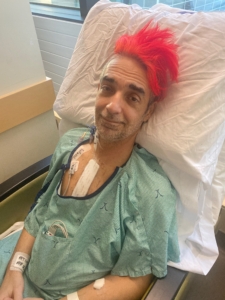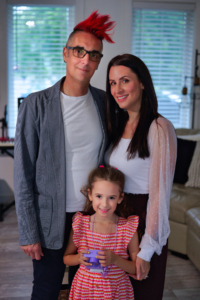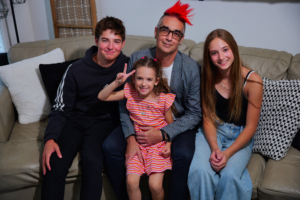Henry Suarez woke up at St. Boniface Hospital. He had made it to Winnipeg by air ambulance service, which was already a miracle.
Dr. Jonathan Hong, a surgeon with Cardiac Sciences at the Hospital, was standing over his bed in pre-op.
“You know how you can tell when someone is really good at their craft and their trade? Dr. Hong radiated that confidence. I could feel it from everyone in that room, which gave me hope,” remembered Suarez, 48. “I didn’t feel as afraid at that moment.”
Only hours earlier, he was working on his computer at home in Thunder Bay, Ontario. It was March of 2025, and a snowstorm blew outside. Little did he know, his life was about to change in an instant.

“It all started with a gurgle in my throat. Immediately I felt an enormous rush and wave of heat from my waist up. In two to three seconds, I felt every single emotion known to humankind, multiplied by 1,000. Fear, nervousness, and anxiety washed over me. Panic kicked in because I knew something was wrong,” Suarez remembered.
Within minutes his jaw locked up. He experienced an unusual tightness in his teeth, and intense jaw pain that radiated up into his ears.
“It felt as if a dentist had pulled all my teeth. Dizzy, I went upstairs as carefully as I could, and told my wife, Carla, something was terribly wrong here. ‘I think I’m having a heart attack,’” he told her.
The couple decided to call 911. “In those moments you don’t know what to do next. Should I call my kids? My lawyer? In a panic, I was grasping at straws.”
An ambulance came quickly and rushed Suarez to Thunder Bay Regional Health Sciences Centre.
At the hospital, the results of a CT scan showed that he had a Stanford type A aortic dissection and a type B dissection as well. Type A is the most common type of tear, located in the part closest to the heart. It was more dangerous than the type B (further from the heart, towards the abdomen) because it was more likely to cause Suarez’ aorta to suddenly rupture. Type A can be very quickly fatal.
The mood turned sombre. “They told me to get my affairs in order and call my family. Carla and I had to prepare for the possibility that I might not survive the air ambulance flight,” heading to Manitoba’s Cardiac Centre of Excellence at St. Boniface Hospital in Winnipeg.

“I thank God they treated my wife and family with compassion. The personal touch goes a long way.”
Thunder Bay paramedics loaded Suarez onto the air ambulance, which took off immediately. In the airplane he texted everyone he could think of, reaching out to family and friends, saying his goodbyes. He had a hard time thinking straight.
“I wasn’t as concerned with myself in those moments as I was with the broken hearts I would leave behind. I thought a lot about my kids. It was around 3 a.m. by that point; I soon lost cell service and dozed off,” he said.
His wife, Carla, stayed behind in Thunder Bay because there wasn’t enough room on the flight for her and their daughter. She would have to wait another 12 hours to catch a commercial flight to Winnipeg, even while Suarez was in surgery.
“The next thing I remember was waking up in pre-op. Dr. Hong handed me my cell phone, and I spoke to Carla one last time before I went in. Everyone was on the ball, super-pro, but still compassionate, cool, calm, collected, and confident,” he said.
The surgery was complex and went on for more than 12 hours.
Dr. Hong saved Suarez’ life with an aortic root replacement with a mechanical valve, and an aortic arch replacement. “Looking back, I wonder how he and his team lasted for that long. Who can do that with a steady hand!?” asked Suarez.
Afterwards, exhausted as he was, Dr. Hong still went to talk to Carla, who had arrived in Winnipeg. “I was impressed that he took the time,” said Suarez.
“I thank God they treated my wife and family with compassion. The personal touch goes a long way.”

“Every single Intensive Care Unit (ICU) nurse, on every single shift change, knew their stuff. They understood my situation; everyone was on top of everything. I could tell and see the level of care at St. B was outstanding, absolutely out of this world. Carla and I still talk about it every day. As far as my aortic valve goes, and everything Dr. Hong did, I’m in good order.”
“They were honest with me in the ICU about my recovery. I can still lead a normal life, but I will have to be careful. When you come out of something like I did, you can feel like your life is over. You think, ‘I can’t be the same again,’ but my St. B caregivers gave me the confidence to move forward, that I can do it,” he said.


